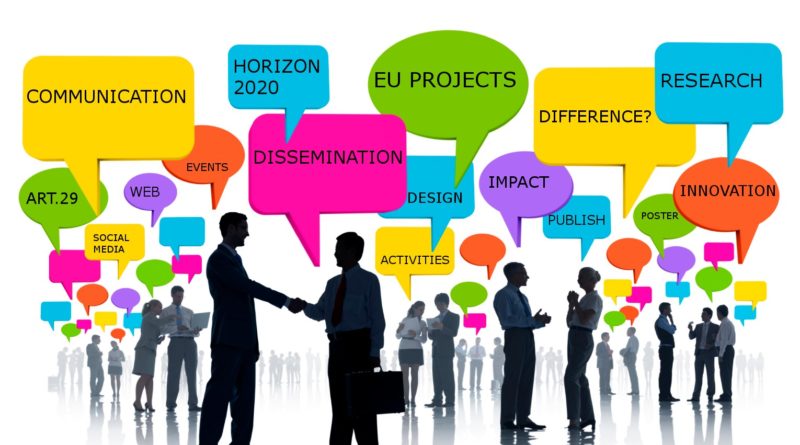Communication vs. Dissemination: What’s the Difference?
Communication vs. Dissemination: What’s the Difference?
In European research and innovation projects, especially Horizon 2020, the dissemination and communication of results is mandatory. According to article 29.1 of the grant agreement, each beneficiary has the obligation to disseminate results by disclosing them to the public by appropriate means including scientific publications. Although this document of reference only talks about dissemination, others talk about dissemination and communication, such as the Social media guide for EU funded R&D projects recently published by the European Commission. The document gives some basic insights but let’s try to go a bit deeper.
So what is the difference between the two?
Dissemination is making sure the projects results are available to the scientific community, policy makers and industry – using scientific language prioritizing accuracy. Communication activities, on the other hand, can be thought of as increasing the public visibility of the project and its results using accessible language. This could include aiming for coverage in TV, radio, print and online media.
A detailed guide has recently been published by the IPR Helpdesk.
Overview
DISSEMINATION | COMMUNICATION | |
Objectives | Public disclosure of results | Promotion of the project and its results |
Audience | Target groups, such as scientific communities, industry stakeholders, policy-makers, etc. | General public, including EU citizens, civil society and mass media |
Language | Scientific language | Non-specialised language |
Channels | Peer-review journals, scientific conferences, online repository of results, etc. | TV channels, radio, newspapers, generalist website, newsletters, etc. |
The distinction between the two is particularly important nowadays as the European Commission and its evaluators want to make sure beneficiaries know the difference as they are two quite different types of activities. Knowing the difference and showing it will also make for a stronger proposal, reinforce the position of the responsible partner and demonstrate its expertise in the field.
Here is a list of various types of activities and channels classified according to the criteria mentioned before.
In Detail
Activities | Channels | |||
Communication | Dissemination | Communication | Dissemination | |
Publications | Non scientific Publications | Scientific publications | Press release e-Newsletter News sites articles Blogs | Articles in scientific magazines and blogs |
Events | Events for the general public | Stakeholders events | Open Doors Public talks | Market showcase B2B networking |
Online | Online promotion | Online disclosure of results | Generalist website Social media | Online repository of results Social media |
Meetings | Two-way exchanges with citizens | Stakeholders engagement | Citizens Blog and Prizes Photo contest Surveys Interviews | Feedback sessions Industrial events Training sessions |
Media | Mass media campaign | Presentations in scientific conferences | Newspapers Local TVs Radios | Scientific conferences, workshops and seminars |
Materials | Promotional material | Conferences proceedings | Leaflet Brochure Poster | Publication of proceedings |
In Brief!
Communication:
- Creates public awareness and enhances the visibility of your project results, consortium and the research programme
- Encourages people to use the results, increasing the chances your research will make an impact. (You may have the best idea but if nobody knows about it, nobody is going to use it and it can’t serve anyone.)
- Can create immediate, short/medium term commercial impact
Dissemination:
- Targeted at specific audiences in the research community, industrial sector, stakeholders, potential investors and future B2B customers
- Facilitates scientific reuse of the results
- Creates long term scientific and commercial impact
What about the impact?
As you can imagine, the impact of a project is strongly dependent on the communication and dissemination. Good communication and dissemination increases the impact as it leads to a larger use by people, industries, partners, and scientists. The commercial impact of the project is crucial to ensure the long-term sustainability of the research & innovation activities, which is highly valued.

